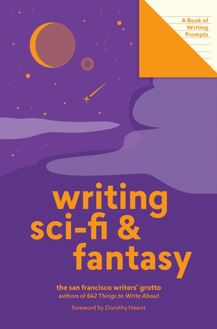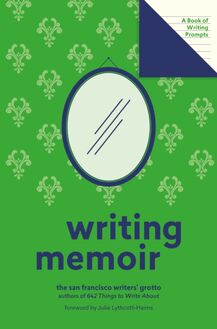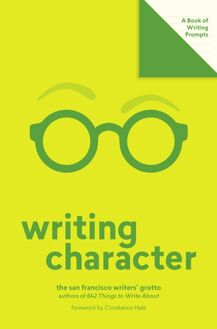Writing Character (Lit Starts) , livre ebook
58
pages
English
Ebooks
2022
Vous pourrez modifier la taille du texte de cet ouvrage
Obtenez un accès à la bibliothèque pour le consulter en ligne En savoir plus
Découvre YouScribe en t'inscrivant gratuitement
Découvre YouScribe en t'inscrivant gratuitement
58
pages
English
Ebooks
2022
Vous pourrez modifier la taille du texte de cet ouvrage
Obtenez un accès à la bibliothèque pour le consulter en ligne En savoir plus
Publié par
Date de parution
05 juillet 2022
Nombre de lectures
0
EAN13
9781647009700
Langue
English
Publié par
Date de parution
05 juillet 2022
Nombre de lectures
0
EAN13
9781647009700
Langue
English
writing character
Once, in a trattoria in Livorno, an Italian painter drew my face on a napkin. I noticed him laboring over my forehead. Do you frown a lot? he inquired, looking into my eyes and then pointing at the lines between my eyebrows. Have you suffered much sadness?
Thankfully, I ve lived through no more sadness than most, but I do frown a lot-whether in impatience, frustration, or great concentration.
That moment with Aldo Matteotti taught me something about myself, but more importantly, it showed me a few things about writing.
Matteotti was forever sketching the faces he saw. Soon after this incident, in a paper store in Siena, I bought my first character journal. It would be dedicated to drawing faces (and other body parts), but in words. In the sketches that filled that book, and then in many others, I translated the painter s practice into a writer s practice. I started quietly observing the remarkable faces around me-in bars, on the bus, in the bleachers. I experimented with how to give readers a picture of a person. I searched for words to paint a precise image. And I played with metaphors, using physical details to convey psychological ones.
Most writers who consider themselves storytellers-whether they are poets, novelists, journalers, or journalists-know that characters are key to any great yarn. Spellbinding narrative almost always relies on compelling characters. For minor characters, we may have only a few words to make an impression. For major characters, the deft character sketch must become a deeper description that lays the groundwork for dramas to come.
Whatever the story, faces are the first portals to character.
To convey character, begin with acute observation, something we all have at our immediate disposal but rarely employ. When I say acute, I mean concentrated, focused, intent.
Stop to really look at the person you intend to describe. Think of this as slow observation. Write down everything you notice: height, hair, shape of face, color of eyes, pallor of skin. But don t stop there. What texture is the hair? What style is the haircut? Is the person tall, six foot three, willowy, lanky, commanding, or Amazonian? What brand of shoes does he wear? What shade of blue is her hoodie? What is the sound of the person s voice?
Beware the tendency to do this too quickly and superficially. I once told an author he needed to distinguish each of the medical doctors in a book manuscript by adding quick character sketches. He tried, but the descriptions he came up with didn t make the docs stand out. They were all tall, dark, and bearded or tall and bearded, with salt-and-pepper hair or tall, gray, and distinguished. Nice try, I told him. No cigar.
Sketches in a character journal allow you to develop the muscles you ll flex when you write a story for publication. Fans of The New Yorker will be familiar with the one-paragraph-long physical description that usually appears on the first or second page of the magazine s classic profiles and often focuses on the face. Here s a personal favorite, by Whitney Balliett, of jazzman Dizzy Gillespie:
Gillespie, who is not a clotheshorse, was wearing a Sherlock Holmes hat, and houndstooth jacket, rumpled striped brown pants, a navy-blue T-shirt, and a couple of medallions suspended from a long gold neck chain. He hasn t changed much in the last ten years. He has a medium-length grayish Afro, and he looks grizzly. His huge and celebrated cheeks are broadsides in repose and spinnakers in action, and he has a scimitar smile and a thousand tiny, even teeth. He likes to smile and roll his eyes in mock surprise, but most of the time his eyes are narrowed; they take in much and send out little, and when he puts on his dark-rimmed, two-ton glasses they disappear.
Balliett s images give us a clear snapshot of the musician. Balliett starts with Gillespie s duds, focusing next on the jewelry, the cheeks, the mouth, and finally the eyes. The perfectly pitched metaphors (cheeks that are broadsides in repose and spinnakers in action ) animate the portrait. Take time to study descriptions like this to see how, exactly, the writer captures details that convey character.
Even though novelists are inventing characters, they must still give attention to detail and precise language. Louise Erdrich, in the novel LaRose , manages to portray several different characters by focusing, more or less, on face, height, and hair:
The eighteen girls trying out for the team wore ponytails centered high on the back of their heads, and wide stretchy headbands of every color.





